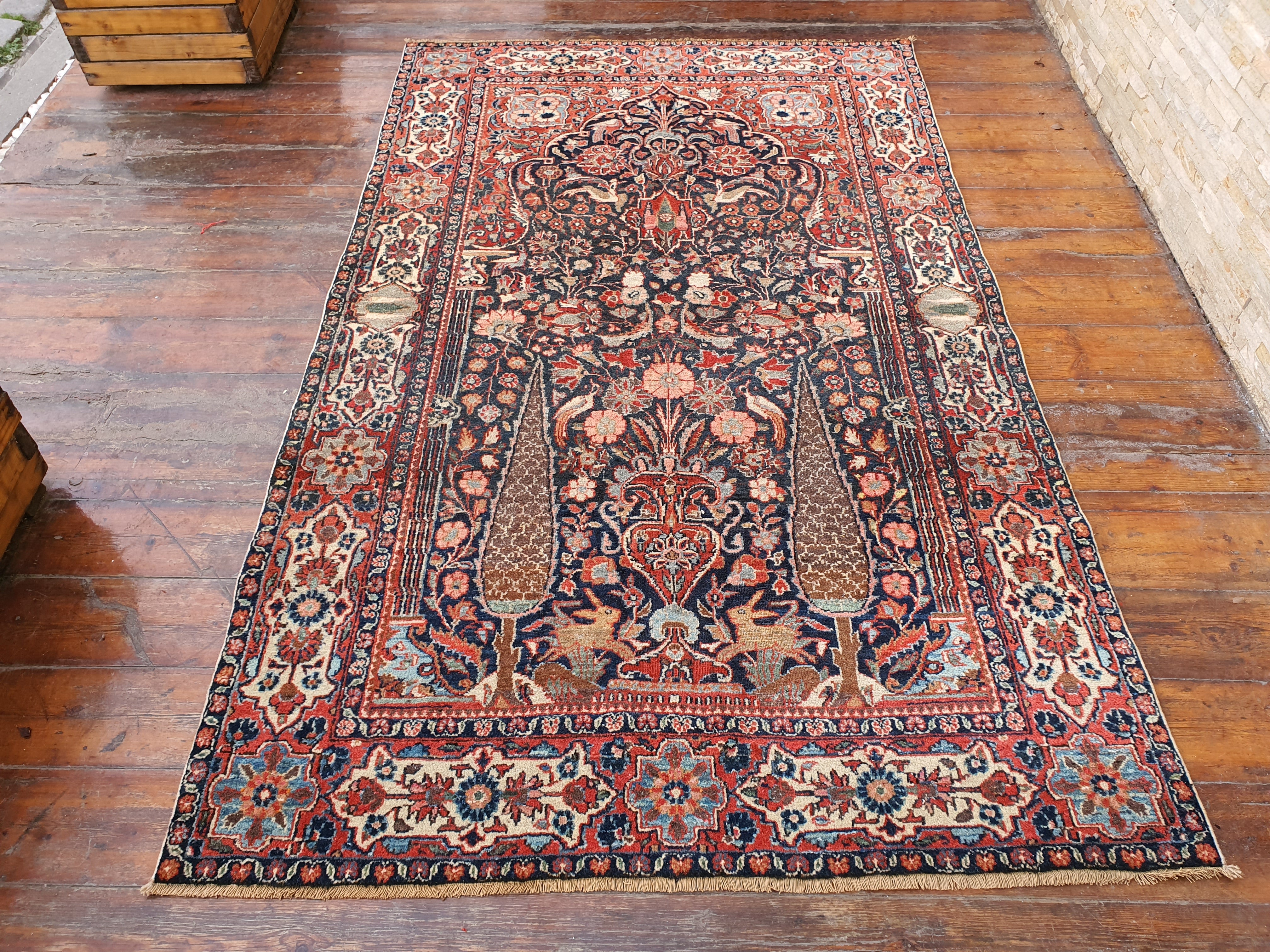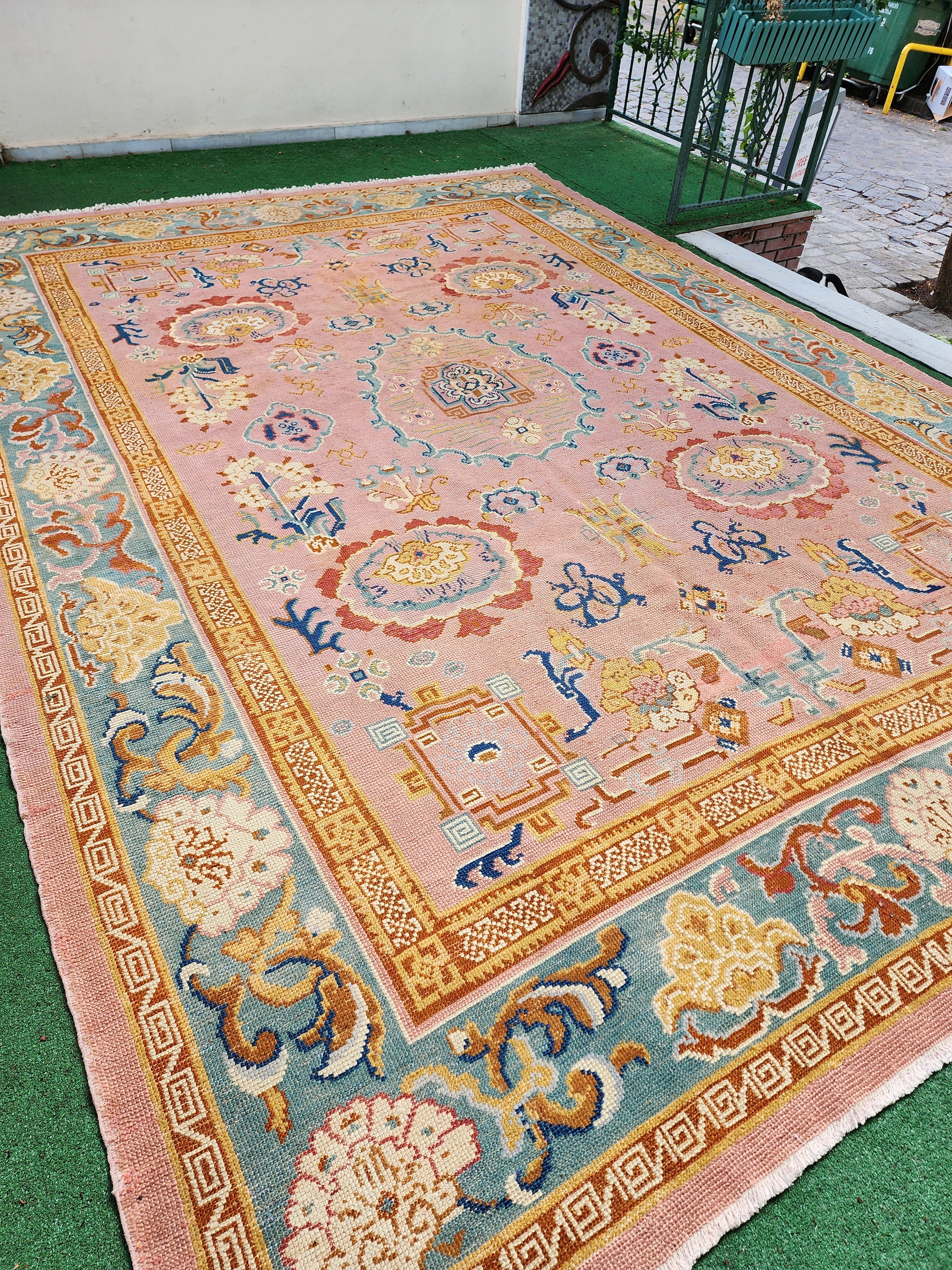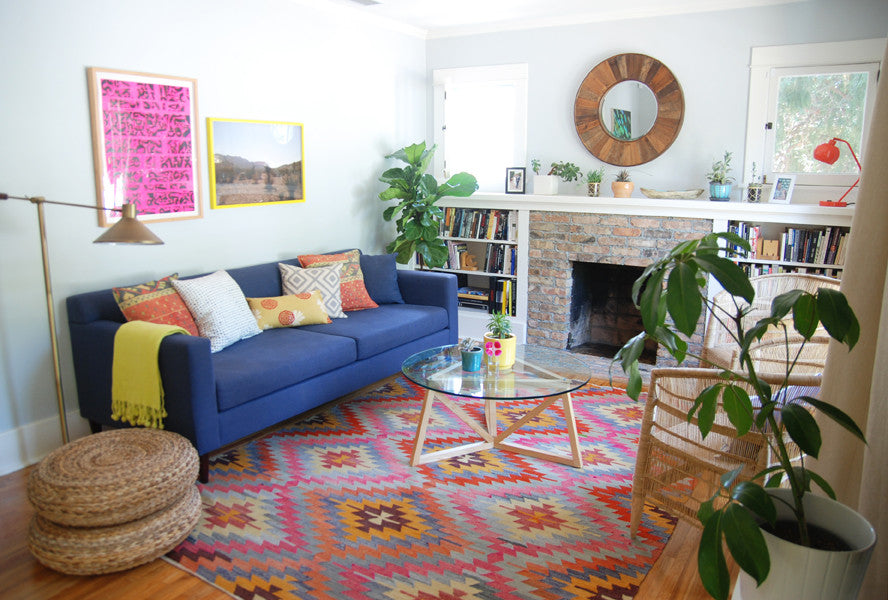
ARTİSTİC VALUE of Handmade Rugs
The discovery of the important artistic value of oriental rugs is not recent. As early as the fourteenth century, in fact, the Italian painters gave them a very prominent position in their pictures. In the centuries that followed, they are represented as playing an important part in the life of the period. Rugs were attributes of royalty; they enhanced the significance of religious settings and were much esteemed as luxury goods in commerce. The great masters of the seventeenth century used Persian rugs as backgrounds for their paintings, while the Dutch painters, probably under the vivid impression of some particularly splendid examples, preferred varieties of rugs from Asia Minor and the Caucasus.
To this quotation from Arthur Upham pope, the famous orientalist, one must add that, on the basis of these reproductions of oriental rugs in European painting, and particularly as the result of the example of F.M Martin (History of the oriental rug before 1800), scholars began to study the oriental rugs that had made their way to Europe and to write their history. These studies began about eighty-five years ago but they will require still more time and patience.
The artistic development of the Oriental rug did not follow a straight line in the 2,000 years between the creation of the Pazyryk rug and the height of the art in the sixteenth century. As in all arts, this development had periods of brilliance followed by others of prolonged stagnation that have left us no specimens of the knotted rug. In spite of political and economic crises, the art of rug tying was practiced uninterruptedly by the nomadic tribes, which, though employing traditional themes for centuries, varied and developed them, them, thus providing a basic stock for the designers of the royal and other manufactories. The development of ornamentation in the style of the Oriental rug attests to the continuity of the art of rug tying as an expression of folk art. Here a brief explanation is necessary.
Thus far hardly any attention has been paid to the felt rugs found in the Altai tombs, for they were eclipsed by the importance of the Pazyryk rug, which is knotted; and yet these products of the nomads' art, rich in colors dating from the fifth and fourth centuries B.C show the basic pattern that characterizes the style of rug making an already hint at the principles of ornamentations that we will encounter again in future developments. In its fields conceived in the manner of a frieze, framed by decorated borders, a large wall rug of Pazyryk shows the same religious scene six times, portrayed in naturalistic fashion-a goddess on her throne offers the flowering tree of life to a horseman. This felt hanging is a good example of the fact that it was not always the borders of a rug but often its central field alone that was filled with figurative motifs. According to written with figurative motifs. According to written sources, the different geometric divisions of the central field of a knotted rug were also ornamented with figurative scenes. Small felt rugs, saddle cloths of the period, present almost all the varieties of simple patterns of oriental rugs. In one the fıled is divided into diamonds. These diamonds are composed of diagonal bands; at the points of intersection and within the fields of these diamonds there are rosettes. In another felt rug the pattern consists of rosettes in staggered arrangement with clematis leaves. This arrangement of the rug's ornamentation, still employed today, is derived from the arrangement in diamonds with rosettes, but without the diagonal bands. On a third felt rug we fınd the rare pattern of ascending motifs. Two kinds of palmettos, arranged in staggered rows, form a close scalloped-style pattern. The smallest of the felt rugs has a grouped order of ornaments. An elongated rectangle in the middle of the field encloses highly stylized tendrils ornamented with flowers. The border of the felt rugs is ornamented with S-shaped or spiral tendrils, flowers and leaves in alternating arrangement, and flame-shaped figures in Kirghiz style. If we consider the many other ornaments and decorations on the various objects of nomad art of this period, we can see that all the artistic material necessary to the development of the art of rug knotting was at hand. These ornaments and patterns are described in many illustrated publications by Russian archaeologists both present and past.
Our best materials for studying the next period in the development of the art are the fragments of textiles found in eastern Turkestan by the Turfan expedition; they were preserved by the sand that buried the tombs of the ancient cities of Loulan, Niya and Astana. These are fragments of wool rugs made with the Turkish knot, woven wool rugs(kilim), and silk fabrics dating from the third and second centuries B.C. The fragments of knotted rugs are ornamented only with motifs of multicolored diamonds and spiral leaves, while the kilims have various floral motifs. The highly developed patterns of the silk fabrics are especially significant. These patterns have bands in the from of tendrils from which flowers hang. The bands contain fabulous birds and animals in two colors. Characteristic pattern consists of disks that contain two birds facing and fighting each other. Another pattern has tendrils with flowers in spiral rolls. These decorative themes play an important part in the development of the knotted rug, for they seem to show the transition to the standard patterns of the Seljuk rugs, as well as to the thirteenth- and fourteenth-country geometric rugs of Asia Minor with animal subjects. A fourth pattern in a silk material from eastern Turkestan is equally important. This pattern consists of flower rosettes alternating in a staggered arrangement with four flowers arranged in the shape of a cross. In this design we find for the first time the alternating staggered arrangement of two different subjects, which in the fifteenth century, even for the ottoman rugs of the first period, was to lead to the development of the arabesque. Even today the standard, well-known design of the Tekke (Bokhara) rugs preserves this very ancient ornamentation in its rosette octagon and the diamond of cruciform flowers that accompanies it. We do not know whether the designs of the silks were used in rug knotting during the middle Ages, but to judge from the examples of later periods, the probability exists. These silks were probably an autochthonous creation of the people of the Turkestan oases, although influenced by Chinese silks. Their designs are indisputably marked by the more ancient ornamentation of the felt rugs made by the nomadic tripes.
The history of the art of rug tying as illustrated by still existing specimens begins only with the magnificent rug production of the Seljuk’s. This beginning is in itself a golden age, a period of expansion that endured. The rug production of the Seljuk’s and the ottomans in Asia Minor, as well as that of the Mamelukes in Egypt from the twelfth to the sixteenth and seventeenth centuries, the royal rug manufactories of Tabriz, Isfahan, Kashan, Herat and Kerman created rugs that were artistically sumptuous and answered the most demanding requirements.
Masterpieces of the period of classic flowering in the art are preserved as unique treasures in all the major museums of the world they present an infinite number of systems of design expressed in the varied division of patterns and the individuality of ornamentation. Only one familiar with the evolution of this design from antiquity to the golden age can resolve the "enigma" of its double and triple combinations of independent projects. These projects are based in general on one of the original divisions formed i the pattern by geometric shapes (squares, lozenges, hexagons, octagons) that produce a reticular arrangement of the rug's field. The decorative elements are placed at the points of intersection of the tracery and are its fields. If, on the other hand, one omits the dividing lines all that is left in the field is rows staggered ornaments, which represent the pure, coordinated design. Geometry supplied a structural basis for a host of ways of combining the subordinating division of the pattern. Gifted designers replaced the simple lines of the geometric divisions with curved, undulating, sinuous lines. Thus, through rhythmic repetition, they created a decorative ornamentation composed of tendrils, leaves, flowers, and buds-the arabesque, an ornamentation motif that , to the westerner, seems as impenetrable as a virgin forest. Two or three of these patterns, each of which is constructed on a different geometric basis but which is in itself complete and autonomous, are copied one over another and assembled in strata. On the drawing that serves as a model to the artisans, the autonomous stages are shown already merged in a single pattern. The only way of distinguishing the intertwined, ramified systems of design was through differences of color. Among the tendrils, flowers, and arabesques the designers inserted the motif of the cloud band (tschi), vases, people, and animals, as well hunting scenes and animal fights. In thıs way the designers created multiple variations that are works of art in their imagery and color. Pope, commenting on the fugal from of these combined projects, wrote: “The conception and composition require as much intellectual effort as the viewer must exert in order to recognize them". Thorough studies by Charles Grant Ellis and Kurt Erdmann have contributed to the decipherment of the design systems of the sixteenth century. These systems can be broken down according to their tiered elements into superimposed layers if they are traced separately on transparent paper. The first layer of the motif is based on the arrangement in diamonds, the second is based on the square, and the third is based on the hexagon. If one superimposes the traced designs on a pane of glass illuminated from below, it appears that each system of design complements the others and that each composition presents new variations on a multilayered system of patterns. The illustrators of Persian books created similar complicated designs that could be employed in the creation of court rugs as well. The works of art created earlier by the Seljuk’s in Persia and Asia Minor served as models for the very finest creations of the illustrators of Persian books. For in the Seljuk period independent coordinated and subordinated systems of design were used for the first time by different arts. The Seljuk’s miniatures, works in plaster, pottery decoration, engraving on metal, and in particular, the motifs of their fabrics and rugs bear an amazing resemblance to the models of Persian and ottoman tug tying of the golden age. The Seljuk's rug designs in particular, so rich in variations, afforded many examples of perfect ornamentation of different combinations. The fact that , of the eighteen existing Seljuk rugs dating from the thirteenth century, sixteen have totally different motifs, demonstrates the astonishing wealth of their ornamentation. Even the well-known ornamentation of the Persian rugs of the classic period, with their concentric arrangement of the medallion in the center of the field and quarters of the medallion placed in the corners, is derived from a Seljuk model through the staggered alignment of the two motifs. This type of ornamentation divided by medallions is simply a detail taken from the motif enlarged beyond its dimensions, variations of which are used to fill the entire field of the rug.



Leave a comment
This site is protected by hCaptcha and the hCaptcha Privacy Policy and Terms of Service apply.